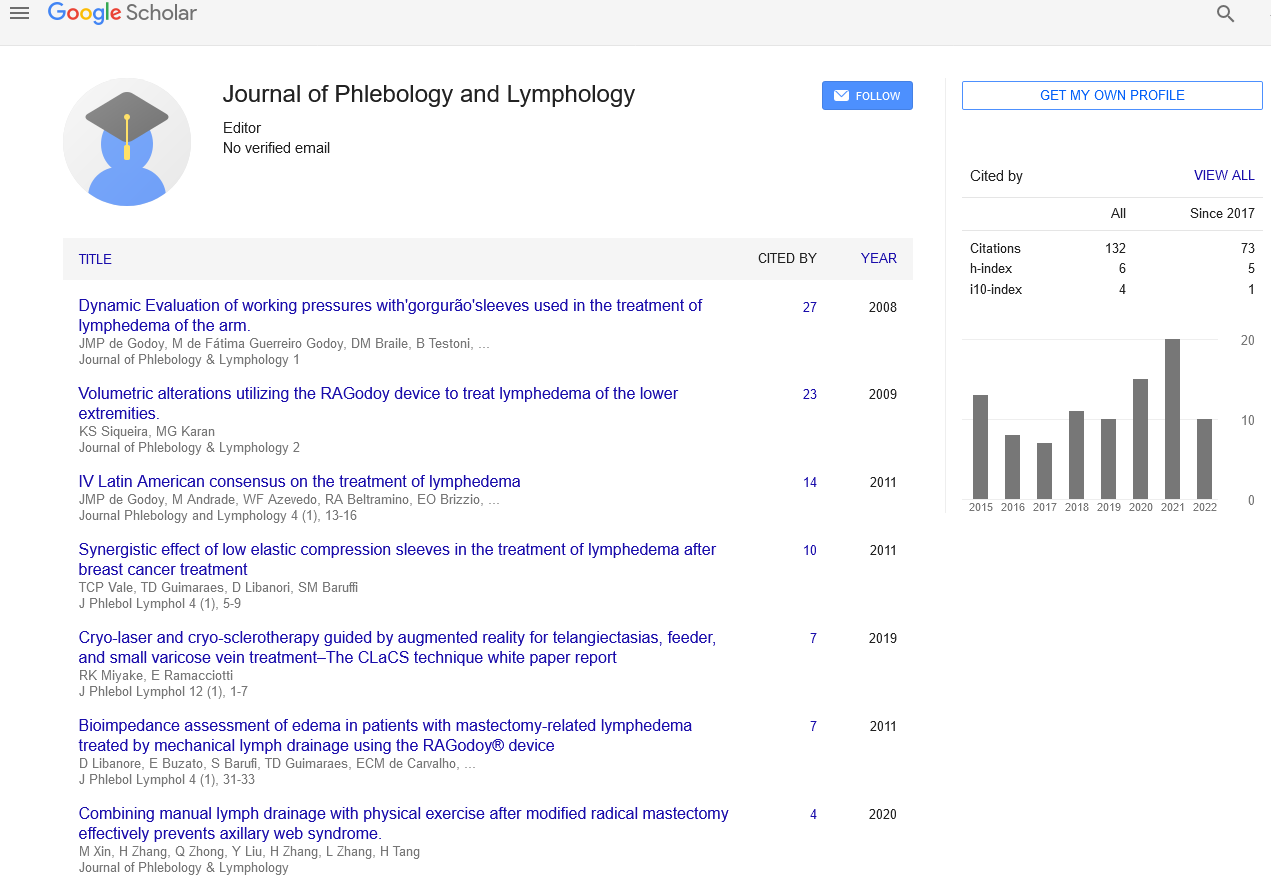Pulmonary embolism secondary to uterine fibroid: a comprehensive analysis
Received: 05-Apr-2023, Manuscript No. puljpl-23-6785; Editor assigned: 08-Apr-2023, Pre QC No. puljpl-23-6785 (PQ); Accepted Date: Apr 27, 2023; Reviewed: 23-Apr-2023 QC No. puljpl-23-6785 (Q); Revised: 26-Apr-2023, Manuscript No. puljpl-23-6785 (R); Published: 29-Apr-2023
Citation: Rattanaburee C. Pulmonary embolism secondary to uterine fibroid: a comprehensive analysis. J Phlebol Lymphology. 2023; 16(2):1-3.
This open-access article is distributed under the terms of the Creative Commons Attribution Non-Commercial License (CC BY-NC) (http://creativecommons.org/licenses/by-nc/4.0/), which permits reuse, distribution and reproduction of the article, provided that the original work is properly cited and the reuse is restricted to noncommercial purposes. For commercial reuse, contact reprints@pulsus.com
Abstract
Pulmonary Embolism (PE) is a life-threatening condition resulting from the obstruction of pulmonary arteries. While it is typically associated with Deep Vein Thrombosis (DVT), uncommon and less recognized cause is uterine fibroids. This article explores the link between uterine fibroids and the occurrence of pulmonary embolism, highlighting the importance of early detection, risk factors, and management strategies
Key Words
Pulmonary embolism; Uterine fibroids
Introduction
Uterine fibroids, or leiomyomas, are common noncancerous growths of the uterus that often occur during a woman's reproductive years. Although they are typically benign, uterine fibroids can lead to various complications, one of which is Pulmonary Embolism (PE). Pulmonary embolism is a severe medical condition characterized by the sudden blockage of one or more pulmonary arteries, usually by blood clots that originate elsewhere in the body, commonly from the lower extremities in a condition known as Deep Vein Thrombosis (DVT).
While the association between uterine fibroids and pulmonary embolism is not widely recognized, emerging research suggests a link between these seemingly unrelated conditions. Understanding the potential connection is crucial for early identification and appropriate management to mitigate the risk of life-threatening complications.
This article aims to explore the relationship between uterine fibroids and the development of pulmonary embolism, shedding light on the risk factors, signs, and symptoms, as well as the critical importance of timely diagnosis and effective management.
Risk Factors and Mechanisms: The precise mechanisms underlying the association between uterine fibroids and pulmonary embolism are not fully elucidated. However, several factors may contribute to this link. Uterine fibroids can cause compression and congestion of pelvic veins, leading to stasis of blood flow. Stagnant blood flow in the pelvis increases the risk of clot formation, subsequently causing Deep Vein Thrombosis (DVT). If a clot dislodges and travels to the lungs, it can result in a pulmonary embolism
Furthermore, estrogen, a hormone that promotes uterine fibroid growth, may also increase the risk of blood clot formation. Estrogen can influence the coagulation system, predisposing individuals to thromboembolic events like pulmonary embolism
Certain risk factors, such as obesity, immobility, family history of blood clots, and underlying medical conditions like cardiovascular diseases and inflammatory disorders, can further amplify the risk of both uterine fibroids and pulmonary embolism. Understanding and addressing these risk factors are vital in managing and preventing potential complications.
Signs and Symptoms: Recognizing the signs and symptoms of both uterine fibroids and pulmonary embolism is crucial for early detection and appropriate medical intervention. Uterine fibroids often present with symptoms such as pelvic pain, heavy menstrual bleeding, frequent urination, and backache. In contrast, pulmonary embolism may manifest with sudden onset chest pain, shortness of breath, rapid heart rate, cough with bloody or blood-streaked sputum, and fainting or lightheadednes
Conclusion
Pulmonary embolism secondary to uterine fibroids is an uncommon yet critical medical condition that necessitates prompt recognition and intervention. Understanding the risk factors and mechanisms underlying this association is essential for timely diagnosis and effective management. It is imperative for healthcare professionals to consider the possibility of pulmonary embolism in individuals with uterine fibroids presenting with relevant symptoms, enabling early intervention and potentially life-saving treatment. Additionally, ongoing research is essential to further elucidate the relationship between uterine fibroids and pulmonary embolism, paving the way for improved preventive strategies and management protocols.





